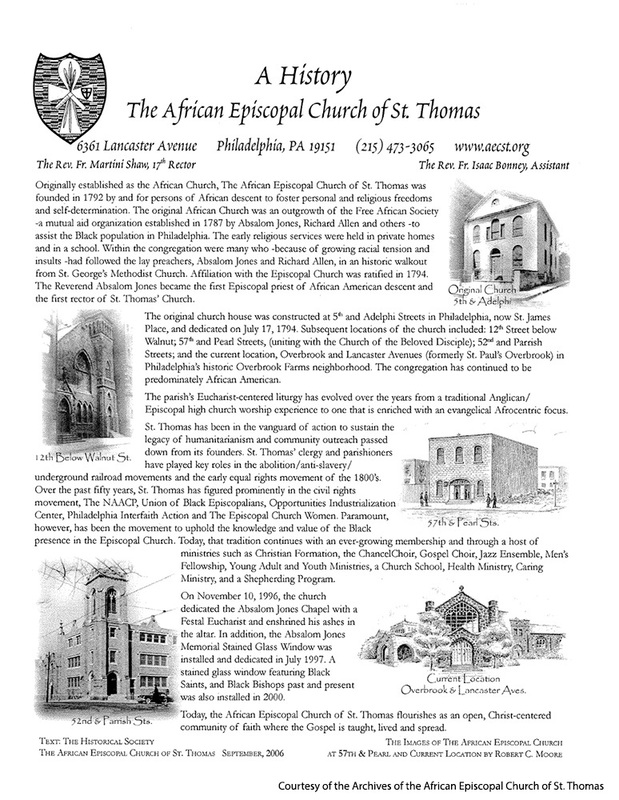The Free African Society
Established in 1787 by former slaves Absalom Jones and Richard Allen, and other free black men, the Free African Society (FAS) was an independent, mutual aid organization formed in Philadelphia to provide assistance for the economic, educational, social, and spiritual needs of the African community. Membership in the Society required adherence to strict rules clearly outlined in the Society’s Preamble, that stated the mission of the non-denominational society, “to support one another in sickness, and for the benefit of their widows and fatherless children.” Monthly dues were paid by each member for the benefit of those in need. With this commitment to its members and the Black community, the Free African Society eventually grew into one of the first Black churches in America.
"A History of the African Episcopal Church of St. Thomas," September, 2006. Courtesy of the Archives of the African Episcopal Church of St. Thomas.
In 1792 the members recognized the need for the creation of the “First African Church.” Although the original members differed in religious views, the majority of the Black members in the Society ultimately favored uniting with the Episcopal Church. After the forced segregation of FAS members at St. George’s Methodist Church, a majority of the membership was disaffected with Methodism and voted to conform to the polity and worship of the Episcopal Church. In spite of Jones’ desire to remain a Methodist, he accepted the charge of his fellow members to serve as the minister of the African Episcopal Church of St. Thomas, which opened its doors in 1794.
Despite the Church’s reception into the Episcopal Diocese of Pennsylvania, Jones’ bishop, the Rt. Rev. William White, agreed to ordain Jones and permit the organization of St. Thomas, only if the parish would agree not to send any clergy or deputies to the annual diocesan convention, thereby depriving African Americans of any representation or voice in church governance. This inconsistency of allowing African Americans to form their own parishes, coupled with a hesitancy to allow these congregations to participate fully in the life of the Church, characterized the duality of race relations within the Church for much of its history. [Sources]


